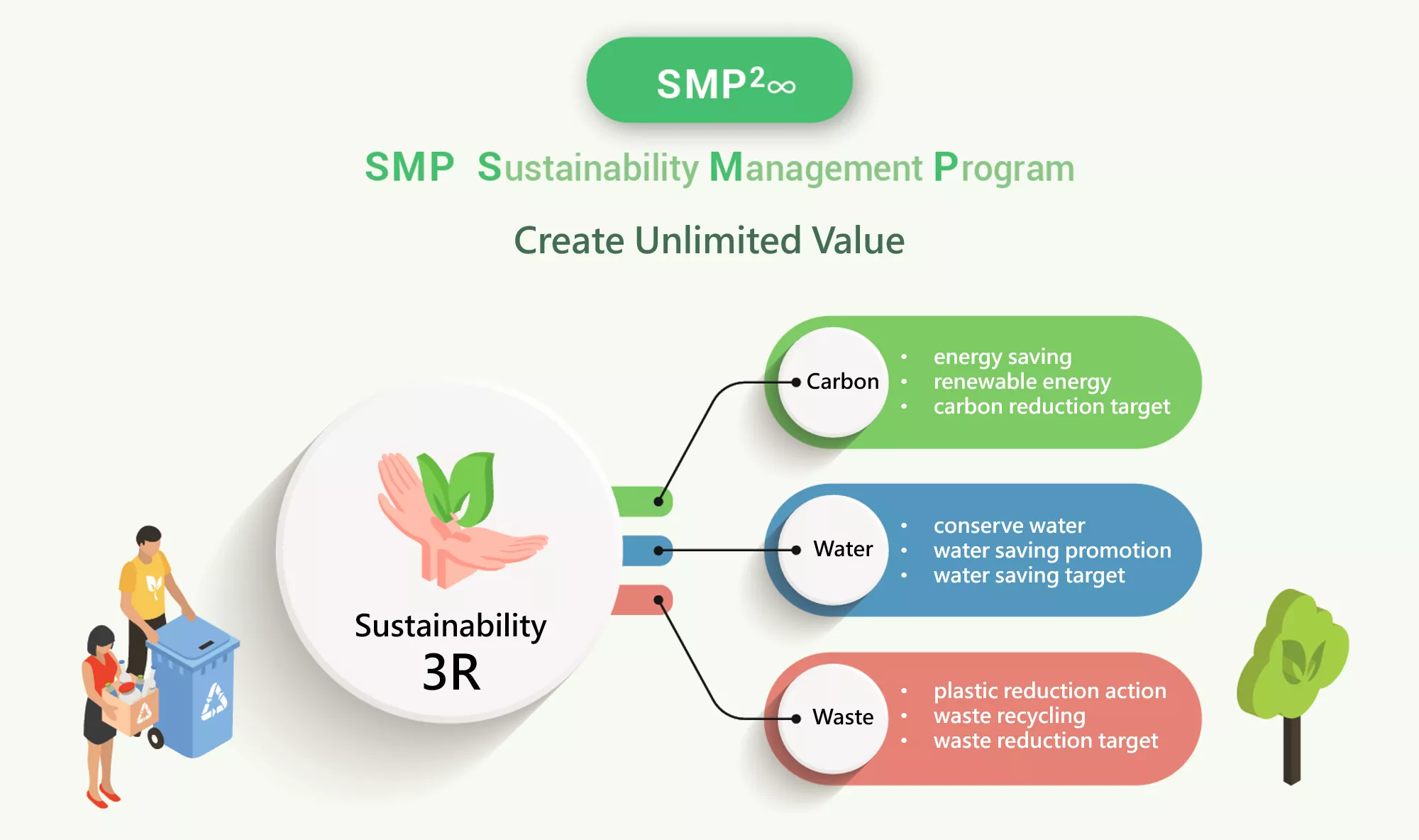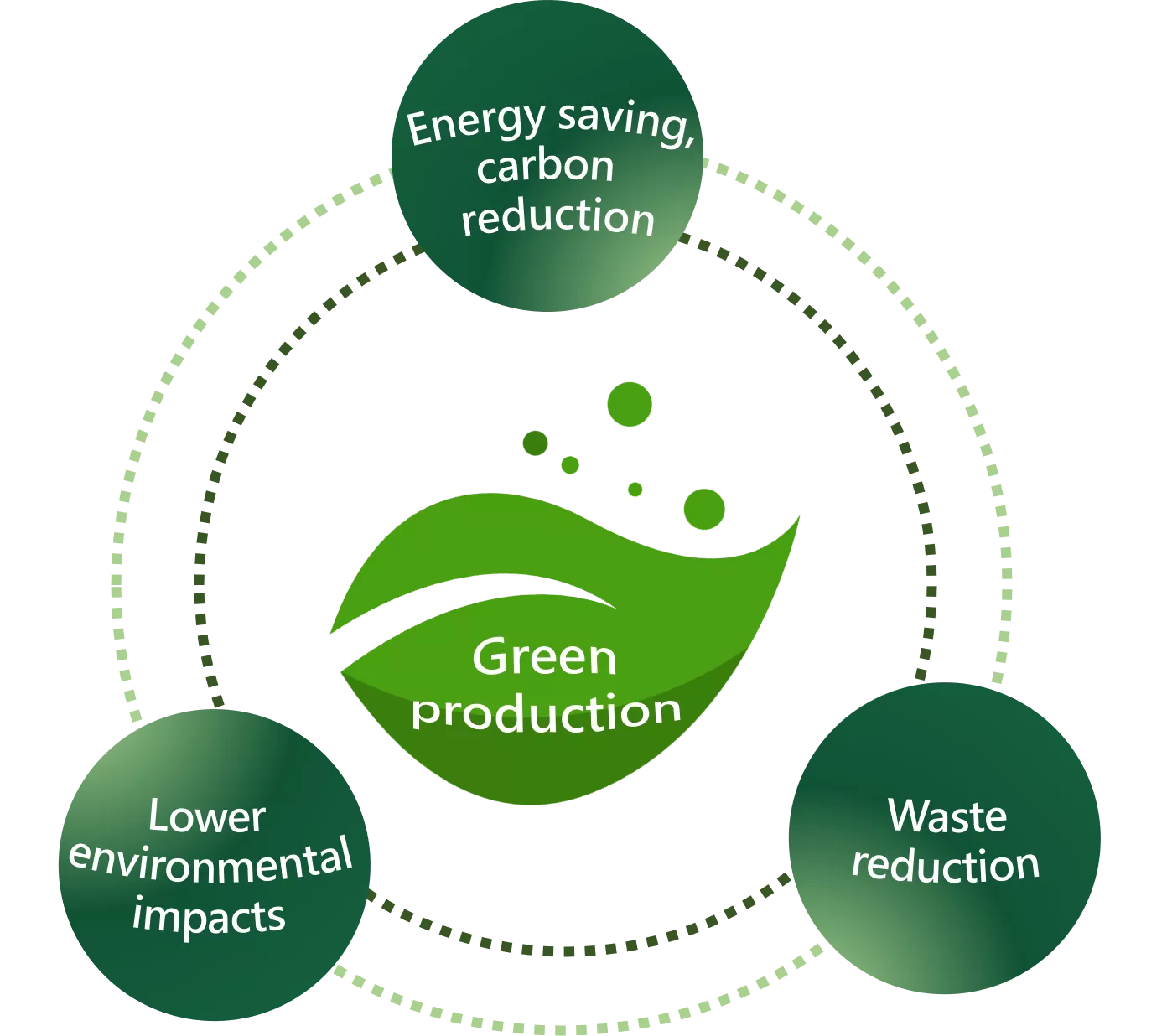|
 |
Energy saving and carbon reduction targets
- Better than statutory requirements, the annual electricity saving rate is greater than the regulatory target of 1%.
- Reduce absolute scope 1 and 2 GHG emissions 51% by 2030 from a 2020 base year.
- Reduce absolute scope 3 GHG emissions from purchased goods and services 25% by 2030 from a 2020 base year.
Waste emission reduction target
- Reduce non-hazardous waste intensity by 10% by 2030 from a 2023 base year.
Water resource management targets
- Reduce water consumption intensity by 20% by 2030 from a 2021 base year.
Energy Management
Simplo is a professional lithium-ion battery module manufacturer, and the main energy used is purchased power, followed by the utilization of diesel and gasoline. In 2022, the energy consumption decreased by 9% from the previous year, and the energy intensity increased by 18%. In order to meet the needs of customers to reduce the demand for production processes and build high-efficiency automated processes, Simplo added unmanned workshops and automated production line equipment in 2022. However, due to the impact of the overall decline in production, energy intensity has increased. In the future, we will continue to monitor and develop energy-saving measures to improve the efficiency of electricity consumption and achieve energy conservation and carbon reduction.
At the same time, in response to the United Nations SDGs 7: affordable and clean energy, Simplo signed a green power contract and introduced the ISO 50001 energy management system. In 2022, the proportion of renewable energy in total energy consumption will increase from 24% in the previous year to 84%, and built solar PV system in the factory, which officially generated electricity in 2023, and implement energy conservation and carbon reduction with practical actions.
Energy Management Policy
-
Compliance with energy laws and regulations
-
Enhancement of all employees’ communication mechanisms
-
Implementation of the energy management system
-
Continuous improvement of energy performance
In response to customer requirements and the reduction of fossil fuel emissions, Simplo (Chongqing) had signed a renewable energy purchase agreement since 2021. The factory uses the green energy certificate of hydropower as the source of electricity, effectively reducing GHG emissions (category 2). And Simplo (Changshu) (including Huapu) built up solar PV systems in the factory in 2022, and completed in December, with an installed capacity of 5.4 MW and an investment of about RMB 32 million.
The subsidiary Trend Power (Changshu) also built up solar PV systems in the factory to generate self-use renewable energy since 2022, and completed the first phase of 1.3 MW in early August 2022, and the second phase of 0.4 MW at the end of March 2023, with a total installation capacity of 1.7 MW. The investment amount of the project is RMB 7.5 million, mainly providing factory buildings and production use. From August to December 2022, the system has accumulatively generated 421,802 kWh (3.6%), reducing about 334 ton CO2e.
Energy Efficient
| Year | Diesel fuel (GJ) |
Gasoline (GJ) |
Electricity - non-renewable energy (GJ) |
Electricity - renewable energy (GJ) |
Total energy consumption (GJ) |
Output (thousand sets) |
Energy intensity (GJ/thousand sets) |
% of electricity consumption from renewable energy |
|---|---|---|---|---|---|---|---|---|
| 2020 | 626 | 1,306 | 457,280 | 0 | 459,212 | 257,605 | 1.78 | 0% |
| 2021 | 447 | 1,643 | 357,353 | 111,953 | 471,396 | 264,717 | 1.78 | 24% |
| 2022 | 307 | 1,177 | 67,596 | 358,225 | 427,305 | 204,215 | 2.09 | 84% |
| % change in 2022 | -31% | -28% | -81% | 220% | -9% | -23% | 18% |
1. Electricity conversion factor: 1 kWh=0.0036 GJ.
2. Heat conversion factors: diesel- Taiwan =0.035169 GJ/L, China PR= 0.042652 GJ/kg; gasoline- Taiwan = 0.032657 GJ/L, China PR= 0.043070 GJ/kg.
3. Energy intensity formula: energy consumption (GJ)/ thousand sets of battery modules.
4. The data includs Simplo (Taiwan), Simplo (Chongqing), Simplo (Changshu), and Huapu.
Energy Usage Intensity
|
 |
Energy Conservation Achievements
Simplo is not high energy consuming industry, we committed to enhancing the energy utilization efficiency. Simplo(Chongqing) had used 100% renewable energy and introduce the ISO 50001 energy management system to achieve reductions in energy use and greenhouse gases emissions since 2021. In addition, the factory adopts different energy-saving measures for the lighting system, air compressor system, chiller system and other energy saving systems to effectively reduce energy consumption.
| Energy system | Methods | Energy saved (GJ/Year) | GHG emissions (ton CO2e) |
|---|---|---|---|
| Lighting system | 1. Road lighting changed to use the solar energy system 2. Infrared light control added for warehouse lighting 3. Traditional lighting replaced with LED bulbs |
1,118 | 202 |
| Air-compression system | 1. Divided air-compression into high pressure and low pressure 2. Air-compression operated with fixed pressure 3. Centralized the air supply of air-compression pipelines to enhance the efficiency of the main compressor |
3,572 | 796 |
| Chiller system | 1. Cleansed the air-handling unit/cooling tower regularly 2. Replaced with the high-efficiency chillers 3. Replaced with high-efficiency water pumps 4. Lowered the chilling water temperature 5. Integrated chillers 6. Turned off central air-conditioners during winters, added standalone air-conditioners and introduced fresh air to lower the temperature of the areas |
5,664 | 1,240 |
| Other systems/measures | 1. Plan for sharing the high vacuum system 2. Introduction of outdoor air to lower the temperature of the low-temperature warehouse 3. Ice water pump/area pump/ice water circulation pump replaced by IE3 high-efficiency motor |
1,243 | 237 |
| Total | 11,597 | 2,475 | |
1. The data includes Simplo (Taiwan), Simplo (Chongqing), Simplo (Changshu), and Huapu.
2. Electricity carbon emission factor: Simplo (Taiwan): 0.509 kg-CO2e/kWh; Simplo (Chongqing): 0.8587 kg-CO2e/kWh; Simplo (Changshu): 0.7921 kg-CO2e/kWh.
Source: Bureau of Energy, Taiwan; Ministry of Ecology and Environment, China PR.
Water Resource Management
Simplo does not use water for manufacturing, but mainly for the domestic use of employees in the factory. Water withdrawals and discharge are following local government regulations, and all waste water is piped and discharged into the sewer system designated by the municipal government for treatment. There is no interaction of shared water resources.
The company regularly tracks water consumption, and regularly entrusts testing units to monitor the discharge of water bodies in the factory area, all of which compliance with local discharge standards and have no impact on the local environment. The company also uses the Aqueduct Water Risk Atlas of the World Resources Institute (WRI) to formulate the responding measures to risks in advance.
| Site | Source | Water body | Risk level |
|---|---|---|---|
|
Simplo (Taiwan) |
Dahan River |
Peishih River |
Low - Medium (1-2) |
|
Simplo (Chongqing) |
Yangtze River |
Yangtze River |
Low – Medium (1-2) |
|
Simplo (Changshu) and Huapu |
Yangtze River |
Baimao River |
High (3-4) |
Water Withdrawals
| Year | 2020 | 2021 | 2022 |
|---|---|---|---|
|
Water withdrawal (million liters) |
545.79 |
522.47 |
482.50 |
|
Water discharge (million liters) |
385.28 |
367.57 |
335.90 |
|
Water consumption (million liters) |
160.50 |
154.90 |
146.59 |
|
Water recycling (million liters) |
42.37 |
52.67 |
43.43 |
|
Water recycling rate (%) |
0.25 |
0.25 |
0.26 |
|
Water intensity (million liters/ employees) |
0.05 |
0.06 |
0.08 |
1. The data includs Simplo (Taiwan), Simplo (Chongqing), Simplo (Changshu), and Huapu.
2. Since the first plant of Simplo (Taiwan) has not installed a flow meter for environmental declaration, only the discharge of the second plant is included.
3. Water withdrawal = water discharge + water consumption.
4. Water recycling rate = water recycling / (water withdrawal + water recycling) * 100%.
5. Water intensity = water withdrawal / number of employees at the end of 2022.
Water Saving Measures
-
The faucets are gradually changed to sensor faucets (Simplo Chongqing)
-
The toilet flushing system was changed to segmented flushing (Simplo Chongqing)
-
Condensed water recycling (Simplo Chongqing)
-
Cooling water tower and process water recycling (Simplo Chongqing)
-
Reduce the water pressure of the faucet to save water
-
Promote colleagues to save water
Wastewater Management (Simplo Chongqing)
-
All wastewater produced by the factory will be discharged to a biochemical sedimentation tank for pretreatment first. Once the government regulation standard is met, the treated wastewater will then be discharged into the municipal sewerage system.
-
Regularly entrust qualified testing units to monitor the domestic sewage and rainwater in the factory area every year. The monitoring indicators include PH value, suspended solids, chemical oxygen demand, etc.
-
In accordance with the requirements of relevant environmental laws and regulations, the rain and sewage discharge in the factory area is diverted, and the discharge of rain and sewage pipes is regularly inspected to avoid overflow.
Waste Management
|
Simplo has established management procedure to ensure compliance with the regulatory requirements. We insist on a philosophy of “reduction at the source, and converting waste into resources” to reduce waste and convert waste into resources as the basis of our waste management. The waste mainly includes general waste, hazardous waste (parts and components of electronics, scrap, and defectives); local qualified vendors are commissioned for the disposal of both. Other recyclable and domestic waste is disposed and recycled by qualified vendors after classification. Simplo rigorously audits the waste disposal vendors annually. The factories in China PR conduct on-site RBA audits every year, and follows up the hazardous waste transportation process irregularly to ensure that there are no leakage and pollution accidents during the transportation by the supplier. Headquarters is confirmed through the system of the environmental protection authority to track, control, and track the order. In terms of waste management mindset, we increase the overall proportion of recycling by using incineration to supply energy for use. Finally, the unrecyclable waste is incinerated (unable to supply energy for use). Implementation of green production for creating sustainable management. |
 |
Unit: tons
| Year | Category | Incineration (with energy recovery) |
Incineration (without energy recovery) |
Others | Recycle |
|---|---|---|---|---|---|
|
2021 |
Hazardous waste |
38 |
98 |
18 |
198 |
|
General waste |
419 |
1,512 |
- |
4,895 |
|
|
2022 |
Hazardous waste |
44 |
70 |
29 |
219 |
|
General waste |
332 |
1,008 |
1 |
4,468 |
1. The data includs Simplo (Taiwan), Simplo (Chongqing), Simplo (Changshu), and Huapu.
2. Description of other disposal: for Simplo (Taiwan), it is disposed of outside the borders of Taiwan.

